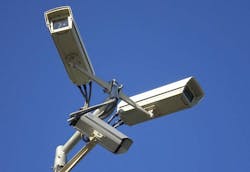U.S. demand for ISR technology shifting from military to counter-terrorism, analysts say
Necessary intelligence to fend off increasing terror attacks sustains the market and presents future commercial market opportunity, according to analysts at market researcher Frost & Sullivan in Mountain View, Calif.
The report U.S. ISR Video Analytics from Frost & Sullivan says that despite reduced U.S. military ISR spending, that the need to provide actionable, real-time intelligence to U.S. troops on the ground is main driver for the market.
Related: Textron AirLand Scorpion ISR/strike aircraft achieves first flight
The number of systems that gather video through sensors and platforms have grown from a few dozen systems a decade ago to thousands today, Frost & Sullivan analysts point out.
The defense budget for ISR technology will reduce to $837.5 million in 2018 from $1.2 billion in 2012, as combat operations in Afghanistan cease over the next few years and forces are withdrawn.
Related: Summit Aviation unveils ISR avionics platform
"The vast amount of video analytics equipment used in Iraq and Afghanistan to warn troops of impending threats and allow them to locate targets will soon return to the U.S.," says John Hernandez, Frost & Sullivan's aerospace & defense senior industry analyst. "Converting these tools into useful assets that can protect the homeland will open up lucrative opportunities in the commercial sector."
In fact, the importance of video surveillance, electro-optical/infrared technologies, and the exploitation of social media within the country is growing considering recent terrorist attacks such as the Boston Marathon bombings, analysts say.
Related: ISR, command and control, unmanned vehicles, and EW could be winners in DOD budget
ISR video analytics is expected to restructure the long-established intelligence cycle in the U.S. Growth in the number of unmanned vehicle systems that can stay air borne for longer periods and collect more data has set in motion changes in ISR collections. This, in turn, is altering intelligence training, data and data storage standards.
Insufficient bandwidth, however, can cause users to spend more time on processing data instead of focusing on additional collection, dissemination, and planning. Limited data storage also is a challenge, analysts say.
For more information contact Frost & Sullivan online at www.frost.com.
